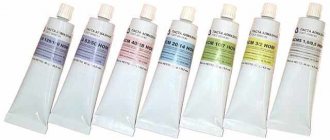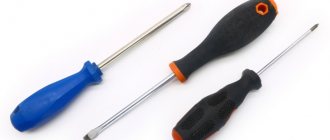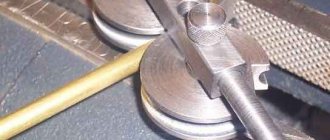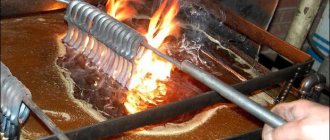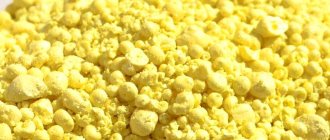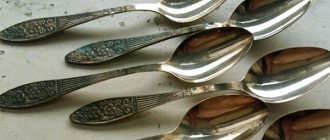Metal is the material that the angle grinder (angle grinder) was originally designed to work with. Now it is used to cut reinforcing bars, various metal sheets, pipes of various diameters, brick, concrete, stone, tiles and other building materials. Thanks to the presence of a variety of attachments, the grinder also allows you to polish and grind the surfaces of products. Cutting metal with a grinder is one of the main, most common jobs. To reduce the likelihood of injury, it must be performed correctly, with strict adherence to general and personal safety requirements.
Mechanical metalworking
A highly sharpened blade made from the hardest steel is used. Usually, it first undergoes heat treatment - hardening. After this, its chemical structure and granularity change, and intermolecular bonds become stronger. A press or other indirect impact using force is also required. Examples could be:
- band saw (it can be made at home);
- guillotine - works on the principle of lowering the cutting part with acceleration;
- Circular Saw.
Below we will take a closer look at some of the tools.
Hand scissors for cutting metal
They are great for use at home, and are also often used in small-scale production and when working with your hands, when you need to perform a single operation, for example, in a car service.
The peculiarity of use is that they can only be used for metal processing of sheet steel with a thickness not exceeding three millimeters. They have their own varieties:
- for straight cuts - the most classic ones, they have slightly rounded blades to increase the force applied to one point, they look like a standard stationery device;
- for curved ones - they are much more convenient for making artistic cuts, as well as making holes;
- fingers – have rounded edges;
- having only one moving part, the other half is fixed to the table.
Also, all products differ in right-handed and left-handed sharpening. The convenience of turning during the process depends on this.
Their design feature is such that the handles are longer than the cutting part, this helps to increase the pressure force. The material from which they are made is also important - the hardness of the steel should be no lower than 52-60 HRC. The blades should not fit closely, but with a gap; if there is no gap, they will quickly fail, and if it is too large, the sheet will wrinkle.
Saws - a device for sawing metal
There are many of them, the choice depends on the purpose of use and the desired result. Below we will talk in more detail about some of the most common types, but for now we will present the complete list:
- Manual cutting. This is a frame having 3 quadrilateral sides. A belt with teeth is inserted into the quadruple. They quickly become dull and require replacement, but they are the cheapest. They have one handle.
- Disk. It has an electric drive, a convenient shape (can be held with one hand) and replaceable disks.
- Tape. The cutting blade moves in a large circle, while the workpiece lies on the bed. The operator must move the steel sheet. Suitable for sawing straight elements.
- End or crosscut. It is convenient for her to work with small records. You need to place and fix the part in the mechanism, and a circular saw is lowered from above along a given radius.
- Pendulum. A variation of the previous one, but on a larger scale.
- Circular. It is very convenient to use, has more power than the first 2, but at the same time is more maneuverable than the others, as it is controlled manually.
Angle grinder (angle grinder)
Convenient equipment that is what you use to cut iron at home. The common name is Bulgarian. It has taken root since the times of the USSR, because the first devices were brought from Bulgaria.
The peculiarity and advantage of the product is the ability to cut not only sheet steel, but also any metal parts - metal profiles, pipes, metal tiles, etc. But it should be warned that this is one of the most traumatic procedures.
Replaceable abrasive (diamond cannot be used) discs can be of different diameters (from 125 to 250 mm) and thickness. The choice depends on the depth of the cut required.
Pipe cutters are what you use to cut metal
Structurally reminiscent of a handsaw, but much more practical. The cutting part looks like a small disk located inside a vice - the pipe itself is clamped in it. The movements are fast, the result is of high quality. The maximum diameter is 4 inches, the minimum is ?. Typically the design consists of three rollers, two of which are movable and the third is static.
Wire cutters
They are used everywhere for cutting wire or rods with a small cross-section. But there is also an analogue for more durable non-hollow cylindrical products - a bolt cutter. It is designed for breaking reinforcement and bolts, equipped with double springs, so the lever doubles the applied force.
What is the best way to cut corrugated sheets? Power tools:
It is definitely difficult to answer this question. Depending on the specific task: the thickness of the material, the shape of the cut line and installation features, different types of tools are used. Much depends on personal preferences.
Bulgarian
Prolonged exposure to high temperatures causes the greatest harm to the galvanized surface of corrugated sheets. The polymer or paint coating can also peel off from the material during heating above 200-250°C. The use of gas-cutting equipment, as well as grinders with conventional discs, for processing corrugated sheets is extremely undesirable. Indeed, in the process of peeling and even burning of the coating, edge corrosion quickly appears - lateral cracks at the ends of the sheets.
Abrasive discs are capable of heating metal up to 600°C. For acrylic, polyurethane or PVC coatings, sparks flying at a sufficiently large distance from under the disk are also dangerous. Plus, after cutting with ordinary discs, burrs remain on the metal that will need to be removed. And the tool makes a lot of noise when cutting.
Cutting with a grinder is allowed only with the use of cutting discs with finer teeth. The edges after processing are quite smooth, with minimal damage to the coating. However, even in this case, in order to avoid the appearance of pockets of corrosion, you should be extremely careful and avoid overheating and sparking. By the way, there is much less noise when cutting with cutting discs.
Disc for cutting corrugated sheets with a grinder
To work with profiled sheets, you need to purchase a special disk of small thickness (no more than 1.0-1.6 mm) made of carbide metal. It is intended specifically for cutting profiled sheets. The edge after processing is more accurate. Some specialists with diamond-coated discs can easily process a pack of corrugated sheets with a thickness of 10 sheets at once.
Jigsaw
If you don’t have other tools at hand, you can use a jigsaw to cut a small amount of material with a profile height of up to 20-25 mm. With a high wave it will tear the canvas. And the tool itself can quickly fail.
Before starting work, the sheet is fixed on the table (ordinary sawhorses are also suitable) so that the edge is suspended 10 centimeters from the surface. It is more convenient to use a jigsaw with a laser pointer - the line will be smoother. It is pressed tightly against the sheet and cut along a pre-designated line. To avoid injuries, you only need to hold the corrugated sheet, and not completely lean on it.
It is more difficult to cut a large amount of corrugated sheeting with a jigsaw, so professional roofers use it mainly to obtain shaped cuts. Such an adjustment may be necessary when laying the roof in areas adjacent to smoke or ventilation pipes. It will take much more time to obtain long longitudinal lines using it than when working with an angle grinder.
Important! Just as in the case of an angle grinder, the jigsaw should not be set at high speeds. Otherwise, the corrugated sheeting will simply burn out.
Electric shears for metal
Working with them when processing thin 1-mm metal is quite convenient - they are not inferior in speed to an angle grinder. With some skill, in a short time, electric scissors can cut a sufficient amount of material both in a straight line and along curved lines.
However, tin snips often curl the edges. Therefore, after processing, you may need to straighten the sheets using a mallet. If it is not at hand, the edge is trimmed with a regular hammer, after placing a wooden spacer.
The ideal option for cutting is nibblers. Essentially, this is a miniature punch press. Since the cut line goes in two directions at once, the corrugated sheet is not deformed. You can even start work from the middle of the sheet. To avoid burrs, before starting work, adjust the scissors so that the tool is turned at 90° to the line being cut. However, the tool is not cheap, and it is used mainly by professionals.
Electric circular saw
The speed of a hand saw is 2 times less than that of an angle grinder, so the metal almost does not melt during processing. With this power tool you can cut quite a large amount of material in a short time.
An electric saw, just like a grinder, must be equipped with a disk for cutting corrugated sheets - they are sold in all hardware stores. A special cutting table will also be needed. When working, you should act carefully - the saw produces a large amount of chips, which can fly off at any moment. If you have no experience working with it, it is better not to undertake cutting corrugated sheets.
Advice! To adjust the profile, you can use a drill attachment. It is quite capable of cutting small sizes of corrugated sheets in hard-to-reach areas.
How to cut metal: processing steel with circular and reciprocating saws
The name comes from its visual similarity to a saber. The cutting part protrudes from the body at a distance of up to 40 cm (such dimensions are used only in industrial production). The device resembles an electric jigsaw. The movements are progressive and reciprocal, which ensures a good even cut. Requires network access and skill to use. It's quite difficult to use a reciprocating saw.
The disc one is much easier to use, but it will not produce such a deep cut. But the cut is narrow and clean, and the amount of chips is minimal. You need to carefully monitor the degree of sharpening of the teeth. The best material to choose from is alloyed alloys with increased hardness.
How to properly cut metal with a grinder. Practical tips and advice
If long pipes lie on supports, you need to cut off their overhanging edge. If you cut them in the middle, then due to its own weight the metal will bend and jam the disk.
If you do not have the skills to handle an angle grinder, then before starting work you should learn how to cut unnecessary parts.
The cutting wheel only takes radial forces. Attempting to change the cutting plane while the blade is inside the metal part will result in its failure.
The heel of the disc (the near lower part of the circle) cuts metal more efficiently.
In order for the grinder and discs to serve for a long time, every 5-7 minutes of work you need to take a break of 20-30 minutes
This rule is especially important for low-power grinders who are afraid of overheating. To increase the service life of discs, especially expensive ones, and to cool the metal, the cut area should be watered
It is advisable to carry out the work together.
To increase the service life of discs, especially expensive ones, and to cool the metal, the cut area should be watered with water. It is advisable to carry out the work together.
Aluminum is a very tough metal. When cutting a piece of large thickness, you need to drip kerosene into the seam, observing fire safety rules.
For molding, cutting tin, and figured carvings, you should use worn-out disks—“bits,” so you shouldn’t throw them away right away.
It is correct to cut the corner not in one step, but separately both shelves.
If pipes, angles, or fittings are long enough to rest on supports, cut the overhanging edge correctly. If you cut between the supports, the part will bend due to its own weight and jam the disk.
Parts of large thickness are cut only in a straight line. If you need to cut out a shaped part, first straight cuts are made, then the remaining unnecessary parts are removed.
You should not put pressure on the grinder. This will lead to jamming or breakage of the disc and overheating of the angle grinder. If the cutting process is slow, the blade should be replaced.
The resulting cut should not be processed with the side of the disk. A different type of disk is used for this.
Molten particles of metal and abrasive, falling on plastic products, glass and car headlights, stick to them, and then it is almost impossible to remove them. Therefore, they must be removed or protected before work begins.
Grinder and band saw
A mechanic, a person who cuts metal, uses an angle grinder only for small and medium-sized parts. It is much easier to perform small tasks with a machine - make a shallow cut, remove excess, etc. It is much easier to cut a metal sheet using a band saw. In this case, the workpiece is placed on the bed and then moves smoothly along the runners to prevent incorrect cutting or deformation. This results in a perfect edge that does not require further sanding.
Preparing to use a grinder for metal
The grinder belongs to the category of relatively dangerous power tools. You can get injured from a flying disc or a tool falling out of your hands. In both cases, the danger is associated with the high speed of rotation of the device's electric motor.
To increase the efficiency of the grinder and expand its functionality, the following additional devices are used in practice:
- tripods;
- retainers.
Their use makes it possible to improve the quality of sawing metal workpieces and increase the accuracy of the process. Working conditions also improve in terms of safety, and productivity increases.
The use of additional accessories allows you to use the tool as a machine designed to perform different types of work.
To make the cutting process as safe as possible, working on metal with an angle grinder should follow a number of rules. They are conventionally divided into preparatory and main (working) activities.
Before cutting begins, a number of manipulations must be carried out.
- Wear special work clothes and shoes (with anti-slip soles), gloves made of thick fabric or leather.
- Prepare a suitable disk based on the characteristics and type of metal being cut, and then install it with the markings facing the top, tightening it with a nut.
- Check the working attachments used for the presence of various defects that impair their integrity: potholes, cracks and other deformations.
- Use personal protective equipment: goggles, a respirator or mask (shield), and in some cases also headphones.
- Check the functionality of the tool, the reliability of its casing (working without it is strictly prohibited), and the condition of the power cord and plug.
- Prepare the workplace: remove flammable materials (lubricant, fuel, paper, rags) and all interfering things. Cover or move to a safe distance objects that could be damaged by hot metal particles.
If possible, the material to be sawn should first be securely fixed, for example, in a vice, in order to eliminate possible accidental movements. Holding workpieces in your hands or between your knees is prohibited.
Thermal methods
Earlier we talked about the mechanical impact, but despite all the positive aspects of the process, we can note the low productivity of such work. Now we will discuss options that allow you to instantly heat the desired zone to the melting temperature with subsequent evaporation of substances. Typically, technologies are used exclusively in large industries, since they are quite expensive.
Gas cutting
The procedure goes like this. An abrasive is something that can be used to cut metal. They cover the abrasive discs. But modern methods help supply air or other gas with such pressure that the sand particles contained in it produce an even cut. In this case, oxygen passes through the burner and is heated to such temperatures as to overcome the threshold of plastic deformation of the steel.
Gas-electric technology
An electric arc is ignited in the machine, as during welding, which is directed to a specific area. Nearby there is a tube (nozzle) that supplies a stream of oxygen to this place. The air accelerates to a very high speed and simply blows out the molten metal substance.
Plasma cutting
This is the most modern and economical method presented above with the maximum degree of accuracy. The main element is ionized gas, which undergoes multi-stage processing and turns into plasma. The jet makes the cut very accurately and quickly. Moreover, it is so thin and smooth that the procedure is suitable for artistic patterns.
Disadvantages of plasma cutting
Disadvantages of the presented technology:
- a lot of noise in the workshop;
- complex equipment - not everyone will be able to handle it correctly; preparation is required;
- maximum workpiece thickness – 10 cm;
- high cost of the machine.
Now let's briefly talk about the methods used in everyday life.
Conventional cutting of thin sheet metal
Cutting metal 1 mm thick is not too difficult, but here you need to be extremely careful and careful. It is when cutting such material that the disc often “bites.” First of all, you need to make sure that there are no defects on the cutting plane of the circle. They are the ones that cause the cutting wheel to fly apart.
Thin sheet metal should be cut from the far edge, working backwards
You should start from the far edge of the sheet, moving backwards. In this case, it turns out that the master is pulling the grinder towards himself. In this case, the disk should not sink deeply - maximum 5-6 mm. With this cutting method, it turns out that the cutting wheel simply cannot catch on anything. If the disk goes deep, the area of contact with the metal is sharply reduced. This leads to snagging, which can cause the cutting wheel to fly apart.
Multifunctional power tool
The renovator is now supplied by many leading manufacturers as the optimal tool for household use. With it, you can do all the household chores with one piece of equipment. This is a convenient, not heavy device with manual drive and access to the electrical network. There are battery-powered models, but they break down faster.
The essence of the device is a large number of attachments, one of which is designed for sawing metal parts. It can indeed help cut wire or thin sheets, but you should not expect high quality from a device for home use. Usually the golden rule applies here - quality is better than quantity of features.
Jigsaw
To obtain a shaped cut on corrugated sheeting, which cannot be made with a hacksaw, use a jigsaw. Hand tools are used for a small amount of work, and cutting a large amount of material is performed using a power tool. Cutting with a jigsaw is faster than with scissors or a hacksaw, but slower than with a grinder. This tool has disadvantages:
- It is not suitable for all brands of corrugated sheets. Using a jigsaw, you can cut the material if the wave height is 25 mm or more.
- A jigsaw is not suitable for making long longitudinal cuts; the work takes a long time and is inconvenient.
Cutting corrugated sheets with an electric jigsaw
Many inexperienced craftsmen wonder how to cut corrugated sheets so as not to be afraid of damaging the material. Roofing made from profiled sheets, as a rule, has a thin polymer coating that can be damaged even by minor abrasive effects or high temperatures. To reduce the negative effect of cutting, you need to treat the edges with a primer, mastic or paint.
Professional methods of metal cutting
We have listed them above; the most popular solution at the moment is plasma cutting. But production still uses manual equipment, which allows you to quickly and efficiently do a minimum amount of work.
In the article we told you how and with what you can cut thick or thin metal at home and in workshops. To summarize, let's look at a few videos:
To clarify the information you are interested in, contact the managers by phone; (473) 239-65-79;. They will answer all your questions.
Cutting profiled sheets with a grinder
Before cutting corrugated sheets using a grinder, you need to buy a special disk, which is specifically designed to cut corrugated sheets.
The thickness of this disc is from 1 mm to 1.6 mm, and the teeth are made of durable material. After finishing the work, it is necessary to paint the edges of the profile decking with special paint, so that corrosion will not appear in these places. But builders do not recommend cutting the entire package of corrugated sheets at the same time, because very often the metal is damaged in such cases. There is only one advantage to using an angle grinder – speed. You can cut sheets in a matter of minutes and without much effort. And there are a few more disadvantages:
- Since the grinder is an abrasive tool, it can damage the sheets. This can happen because hot metal particles, when cutting a sheet with a grinder, fall on the protective surface of the flooring and burn through the polymer coating, and after a while corrosion appears in these places.
- After cutting the metal with a grinder, the edges remain torn and will need to be further processed.
- A very strong and sharp sound when cutting corrugated sheets with an angle grinder can cause concern for you and your neighbors.
How to choose an angle grinder + (Video)
Choosing the right grinder is the key to high-quality and durable operation of the tool.
Therefore, the acquisition process must be taken quite seriously, paying attention to its main parameters: cutting blade diameter and power
Most often, buyers are afraid to purchase professional models, choosing units with low power. However, this is completely unfounded! The fact is that it is in machines with low power that disks often jam when the device is simply unable to pull it out.
Professional models are safer to drive than low-power ones.
Therefore, for beginners, the optimal choice would be a tool with a power of 900-1000 W, with a spindle speed of about 10,000 rpm and with 125 mm discs. Such technical characteristics make it possible to saw iron.
To work with metal surfaces, it is better to use models that are designed for a 115 mm disc and are powered by a battery. However, as practice shows, their considerable cost is not always justified for everyday use.
If the selected model suits you in terms of technical characteristics, but it is inconvenient to hold while working, you should think about another option.
How to cut a circle with a grinder
Sometimes it is necessary to cut a circle on a sheet of metal, but there is no tool other than a grinder. To do this, mark a circle on the selected area with a white marker or thin chalk. The cutting line should be on the outside of the circle so as not to reduce it.
We install the grinder not perpendicular to the sheet, but at an angle. Moreover, the grinder will lean towards the center of the circle. At low speed we make a preliminary contour cut. Both the contour and main cuts must be performed with short movements, moving the position of the circle along the contour.
You can do the same when working with other materials. To cut a circle in a tile for a pipe using a grinder, you need to make a mark on the back side of the tile. Then take a grinder and make slots along the chord inside the marked circle at a distance of 4-5 mm from one another.
Then the tile is turned at a right angle, and slots are made perpendicular to the previous ones. During cutting, pieces of tile will crumble, but within the outlined circle. The remaining teeth can be sanded with a grinder, first from the front side.
Naturally, the cut will be oblique, with an extension to the back side. But this edge can be gradually grabbed with pliers and chipped away. At the end of the operation, the back side of the hole is ground.
This requires precision, attention and patience.
